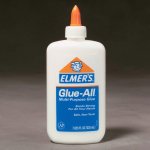scull20
New member
I asked if someone has ever bolted the EVO sliders instead of welding them .
This was my question...
You told me that it is a stupid idea and just an ego show.
Please could you motivate it?
Do you think that a weld is more solid than a bolt?
I'm writing in a forum( in the technical area) in order to exchange informations, opinions and, why not, show what I build...is it not the ame of the forum?
English is not my language but I try to avoid mystakes. If something is not so clear please ask me to clarify it, I'll do my best to do better translation.
Sincerly thanks
[emoji482][emoji482][emoji482]
The weld is a more effective means to transfer to force to the frame of the jeep than bolts would be based on their location with respect to the centerline of the leg of slider.
Essentially, as you load the slider (let's say vertically, as though the jeep was coming down on a rock) you are taking this vertical force from the slider rail and transferring it back to the support location (the frame of the jeep)
This vertical force is multiplied by the horizontal distance which it occurs from the support location (length of leg of slider)...creating a moment (aka Torque) at the support location. This moment can be resolved into a force couple (opposing push/pull forces, separated by a distance). The force couple is what you need to resist when you attach the slider to the frame (along with a shear force). That being said, you will decrease the push/pull forces which you are going to have to resist within the force couple by increasing the distance in between the opposing push/pull forces.
In this case the distance from the centerline of the leg of the slider from the top and bottom edge of the foot of the slider is a larger distance than that of the the distance between the centerline of the bolting holes...
Therefore...the bolts will see a larger force in them than the welds when having to resist the same impact force of the jeep coming down vertically on a rock.
Certainly you can design a bolt to resist these forces, but you are also bolting through a thin walled hollow tube-like member (the frame). The forces the bolts will see will be concentrated in shear along the bearing locations of the bolt holes and against the face of the tube against the washers. While I haven't run a number to check the frame member for any localized block shear or wall buckling, it's certainly a higher possibility than if you were to just weld it like its intended.
The welds transfer the force more effectively as described above, simply based on the geometry of the foot of the slider. Not to mention the strength of a continuous fillet weld all around the foot of the slider is going to be far stronger in tension and shear than the bolts in this application.
/end statics and strength of materials
I have a set, I had them welded on, this is the way they were intended to be installed.



